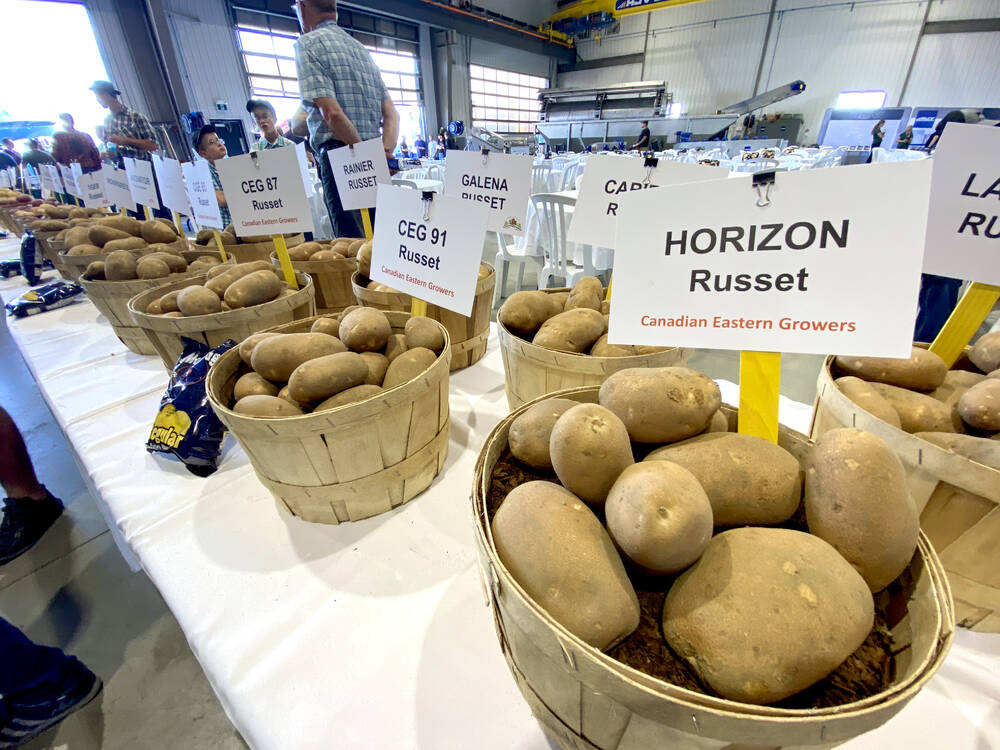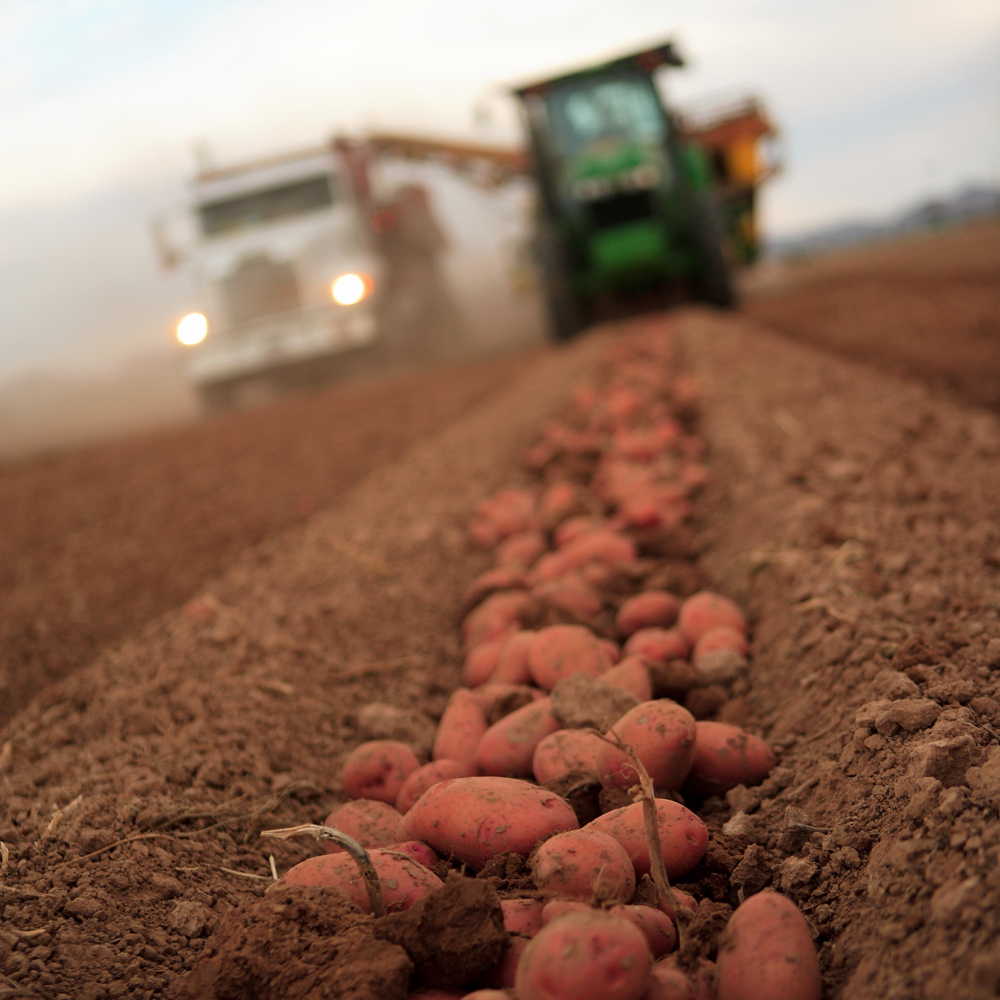Scab is an ongoing concern for fresh market potato producers and a key focus for new variety development.
Eugenia Banks, an Ontario Potato Board potato specialist and researcher, said pitted scabs have been particularly prevalent this year and growers are looking for resistant varieties with “nice skin, a round size and yellow (flesh).”
Why it matters: Scab doesn’t usually affect yield but it significantly affects marketability of fresh potatoes.
Read Also

Claas brings 1000 Series SP forage harvesters to Canada
In mid-August, Claas unveiled its new line of Jaguar forage harvesters at an event in Visalia, California, deep in the heart of that state’s dairy region.
Michigan State University’s MSFFo31-6, an early table variety with white flesh, shows promise as a scab-resistant variety. It was on display at the Ontario Potato Field Day in Alliston Aug. 22.
“David Douches (director of MSU potato breeding and genetics) tried to develop resistance to scab, and he got it,” said Banks. “It’s just being developed, but it didn’t show much scab in my trial.”
The trials generated interest during the Aug. 21 Potato Research Open House at the Elora crops research plots.
According to the National Potato Variety Evaluation industry update, four companies are evaluating CV15129-1, a red creamer variety with moderate scab resistance. Creamer potatoes are small, tender tubers, younger than “new potatoes,” with thin ruby-red skin, high moisture and a firm cream-coloured to white flesh.
Two companies are evaluating the red-skinned, white fleshed F160025-03, which has similar yields to standard varieties but is resistant to PVX, golden nematode and fusarium dry rot, and moderately resistant to common scab.
Both varieties score well as a boiled or baked potato.
As an aside, Banks said the move toward yellow flesh is a recent change. Traditionally, there has been greater demand for white flesh.
“There is also lots of demand for russets,” Banks said, adding that 20 years ago, no one cared about them, but now people want them. About a dozen russet varieties were displayed at the Alliston event.















